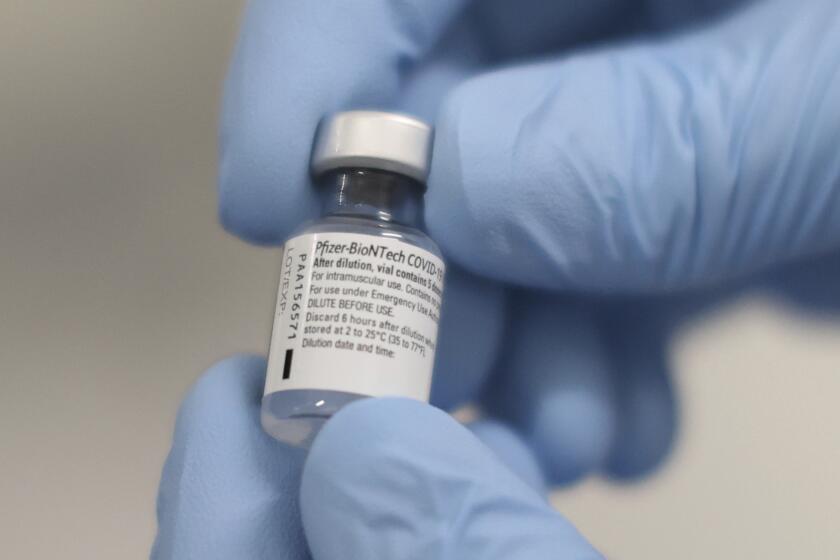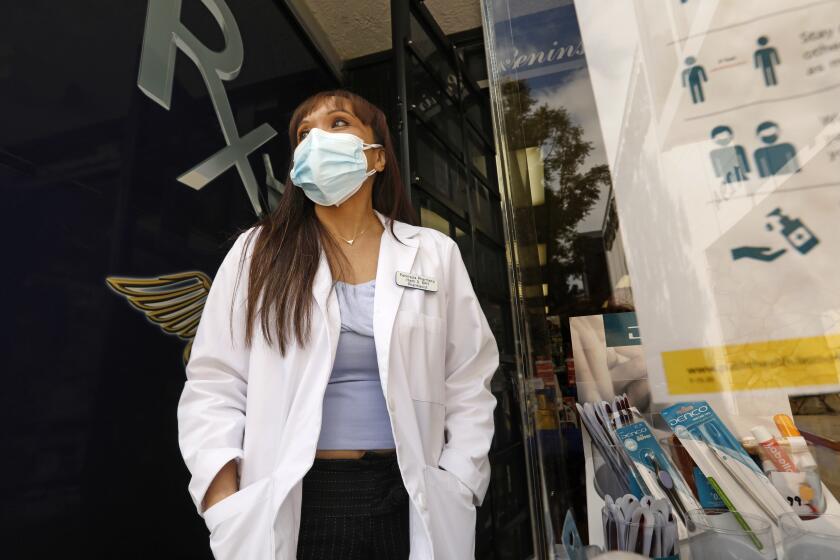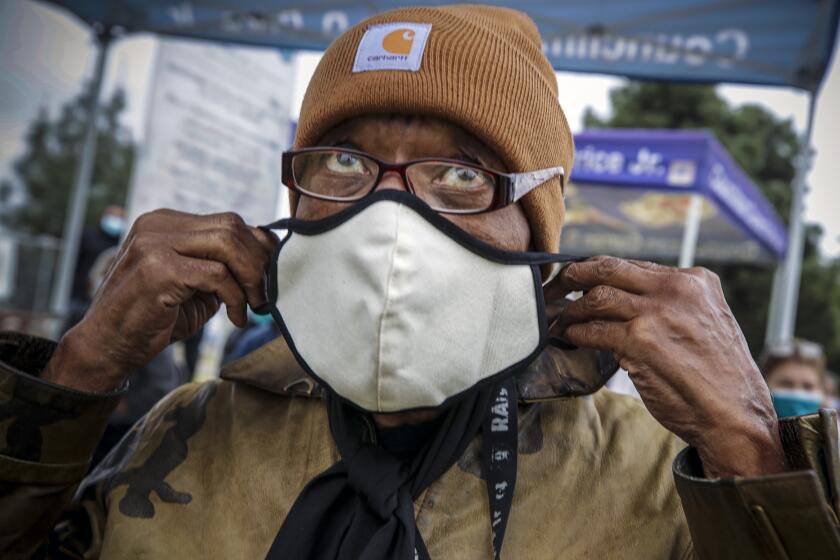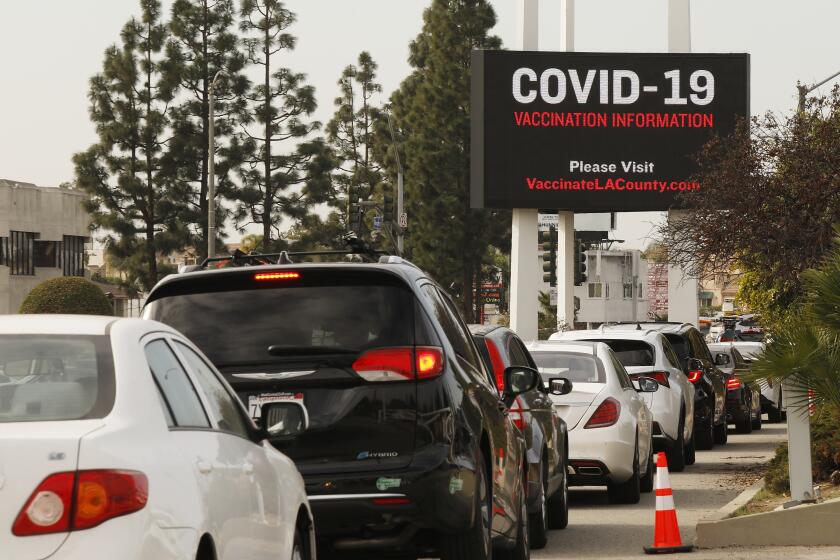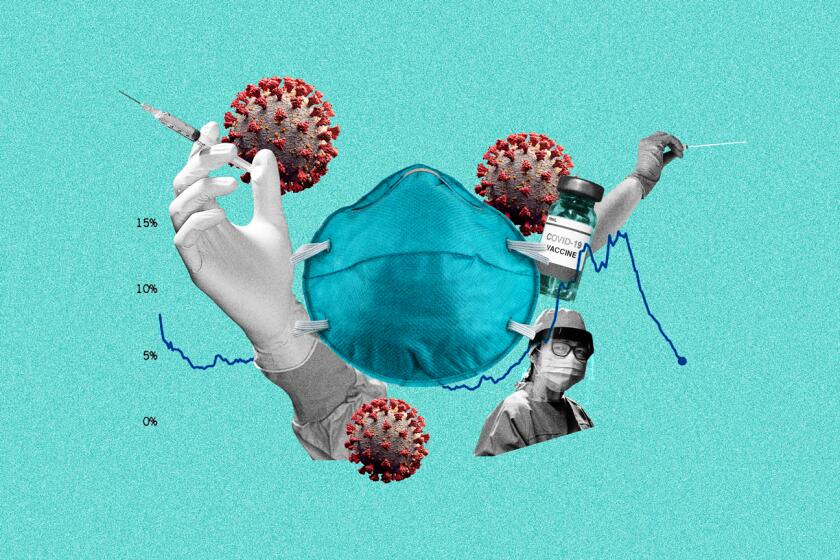Do I still need to wear a mask after being vaccinated? We answer your questions
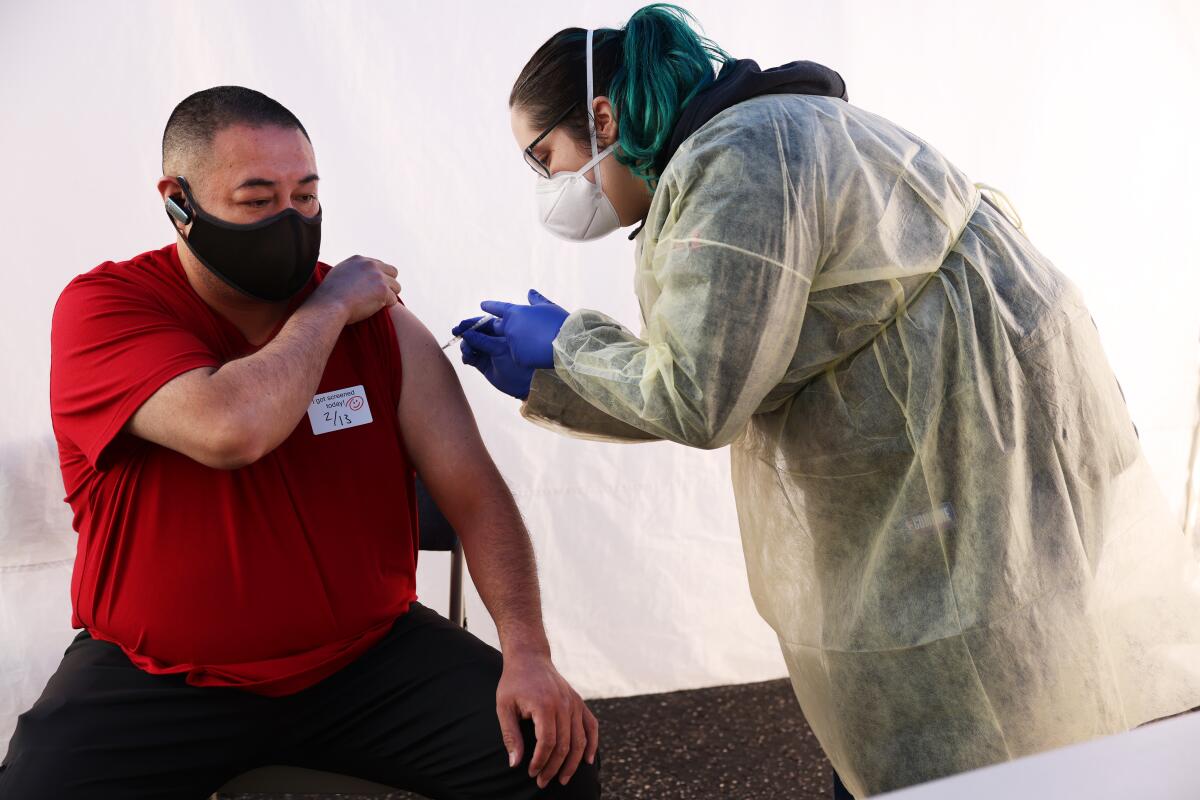
- Share via
The pace of COVID-19 vaccinations is picking up across California, a hopeful turning point in the pandemic that nevertheless raises a new question: What precautions do those who are immunized need to take?
The vaccines, though safe and effective, are not at this point a license to completely abandon all infection-prevention protocols, health officials say.
Basic steps like wearing masks in public and keeping a physical distance from those outside your household will still provide an additional layer of safety, experts say, and help further drive down COVID-19 transmission — eventually allowing more parts of the economy to reopen.
Here are some tips for those who have recently been vaccinated, or are about to get their place in line:
COVID-19 vaccines are now being administered to healthcare workers in the U.S. What are your questions about the timeline, the safety or the science?
Do I still need to wear a mask even after I’ve been vaccinated?
Yes. The Centers for Disease Control and Prevention says that continued adherence to public health measures like wearing face coverings, observing physical distancing, regular handwashing and avoiding crowds and poorly ventilated areas is still recommended even for someone who has received both required vaccine doses.
“It’s important for everyone to continue using all the tools available to help stop this pandemic as we learn more about how COVID-19 vaccines work in real-world conditions,” CDC guidance states, particularly as it’s not yet definitively known “whether getting a COVID-19 vaccine will prevent you from spreading the virus that causes COVID-19 to other people, even if you don’t get sick yourself.”
Universal mask wearing, in particular, is seen as critical in keeping the spread of the coronavirus on a downward trend. A recent CDC report found that states that have imposed mask orders have seen declines in the growth of COVID-19-associated hospitalizations.
Wearing a cloth mask over a surgical one can offer substantially better protection from potentially infectious aerosols, the CDC said in a new report.
How do I wear my mask correctly?
The key, federal scientists said in a report released this month, is to make the masks fit better.
Using a loose medical procedure mask or only a cloth mask blocked only about 40% of particles from a simulated cough in tests. But tighter-fitting masks have the potential to reduce exposure to potentially infectious particles by more than 90%, the CDC said.
“Wearing any type of mask performs significantly better than not wearing a mask. And well-fitting masks provided the greatest performance,” said Dr. Rochelle Walensky, the CDC’s director.
Placing a cloth mask over a medical one or putting on a tightly fitted medical mask could reduce exposure, a CDC report finds. There are caveats.
What about double masks?
One way to improve masking is to first put on a paper mask — such as a blue surgical mask — and then put on a tight-fitting cloth mask over that, Los Angeles County Public Health Director Barbara Ferrer said.
The second mask covers the big gaps that can occur with a paper mask, allowing air to leak around the sides.
Another option is to use a cloth mask that has multiple layers of fabric, according to the CDC.
The process for getting a COVID-19 vaccine varies county to county.
What are some other mask tips?
- Using a nose wire — a metal strip at the top of a mask that can be molded to fit the bridge of your nose — can help prevent air from leaking out the top.
- Try to make sure air doesn’t flow from the area near your eyes or from the mask’s sides. “If the mask has a good fit, you will feel warm air come through the front of the mask and may be able to see the mask material move in and out with each breath,” the CDC says.
- Knotting the ear loops at the mask’s edge, and folding and tucking excess mask material under the edges, can help improve the fit. Check out this video instruction.
- Use only one KN95 mask at a time. CDC officials say KN95s as well as traditional N95s are intended to be used on their own. Adding extra masks underneath or on top of them “could not only affect how well they fit the face and decrease their effectiveness, but could increase the effort needed to breathe through them,” the CDC said in an email to The Times. The CDC suggests not using N95 masks, saying they “should be reserved for healthcare workers and other medical first responders to prevent supply shortages.”
Are vaccines safe? When can I get a booster dose? Do I have to wear a mask? We’ve answered hundreds of newsletter readers’ questions. Here’s an archive.
More to Read
Sign up for Essential California
The most important California stories and recommendations in your inbox every morning.
You may occasionally receive promotional content from the Los Angeles Times.
